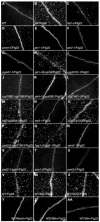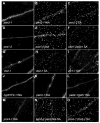Glucosinolate metabolites required for an Arabidopsis innate immune response
- PMID: 19095898
- PMCID: PMC2630859
- DOI: 10.1126/science.1164627
Glucosinolate metabolites required for an Arabidopsis innate immune response
Abstract
The perception of pathogen or microbe-associated molecular pattern molecules by plants triggers a basal defense response analogous to animal innate immunity and is defined partly by the deposition of the glucan polymer callose at the cell wall at the site of pathogen contact. Transcriptional and metabolic profiling in Arabidopsis mutants, coupled with the monitoring of pathogen-triggered callose deposition, have identified major roles in pathogen response for the plant hormone ethylene and the secondary metabolite 4-methoxy-indol-3-ylmethylglucosinolate. Two genes, PEN2 and PEN3, are also necessary for resistance to pathogens and are required for both callose deposition and glucosinolate activation, suggesting that the pathogen-triggered callose response is required for resistance to microbial pathogens. Our study shows that well-studied plant metabolites, previously identified as important in avoiding damage by herbivores, are also required as a component of the plant defense response against microbial pathogens.
Figures





References
-
- Thordal-Christensen H. Curr Opin Plant Biol. 2003;6:351. - PubMed
-
- Mysore KS, Ryu CM. Trends Plant Sci. 2004;9:97. - PubMed
-
- Nürnberger T, Lipka V. Mol Plant Pathol. 2005;6:335. - PubMed
-
- Gomez-Gomez L, Boller T. Trends Plant Sci. 2002;7:251. - PubMed
-
- Nürnberger T, Kemmerling B. Trends Plant Sci. 2006;11:519. - PubMed
Publication types
MeSH terms
Substances
Grants and funding
LinkOut - more resources
Full Text Sources
Other Literature Sources
Molecular Biology Databases

